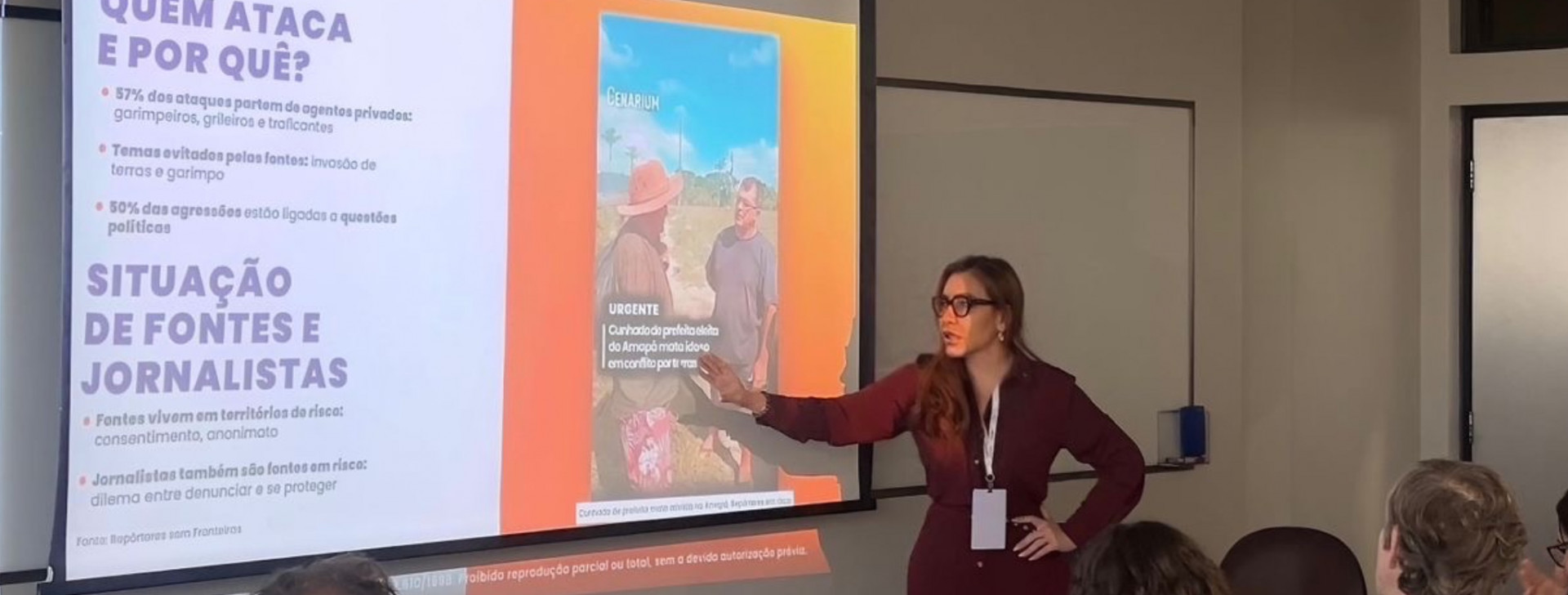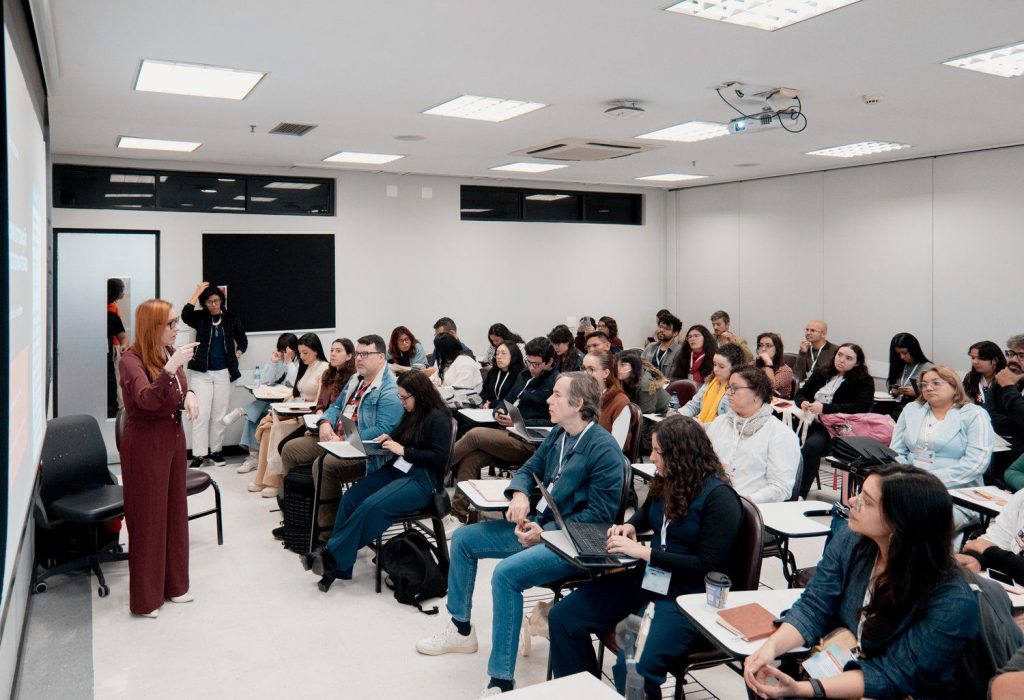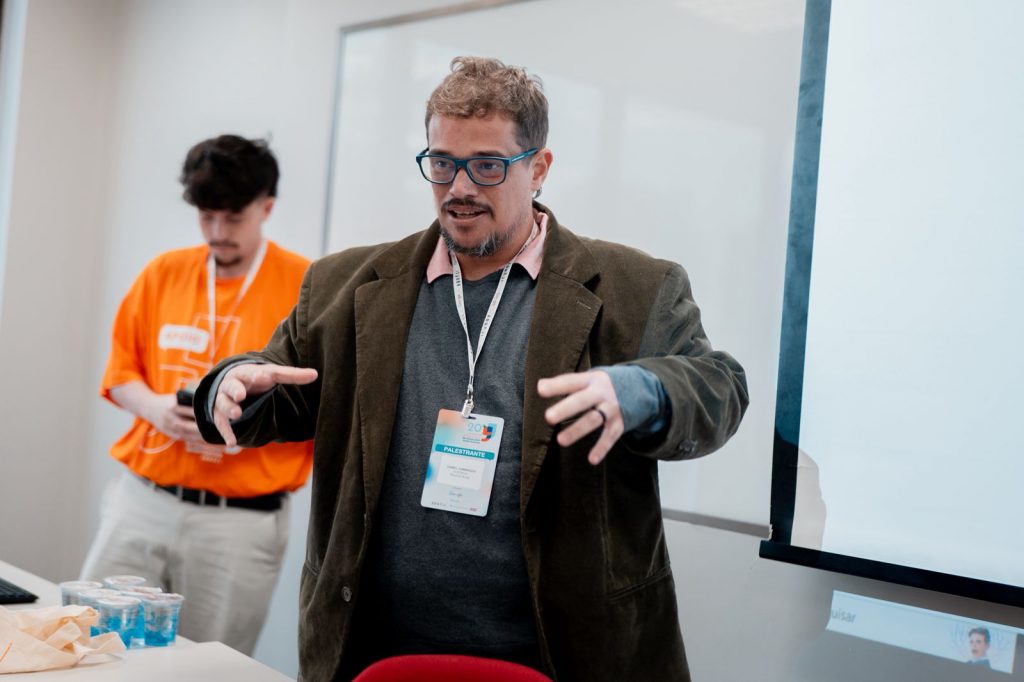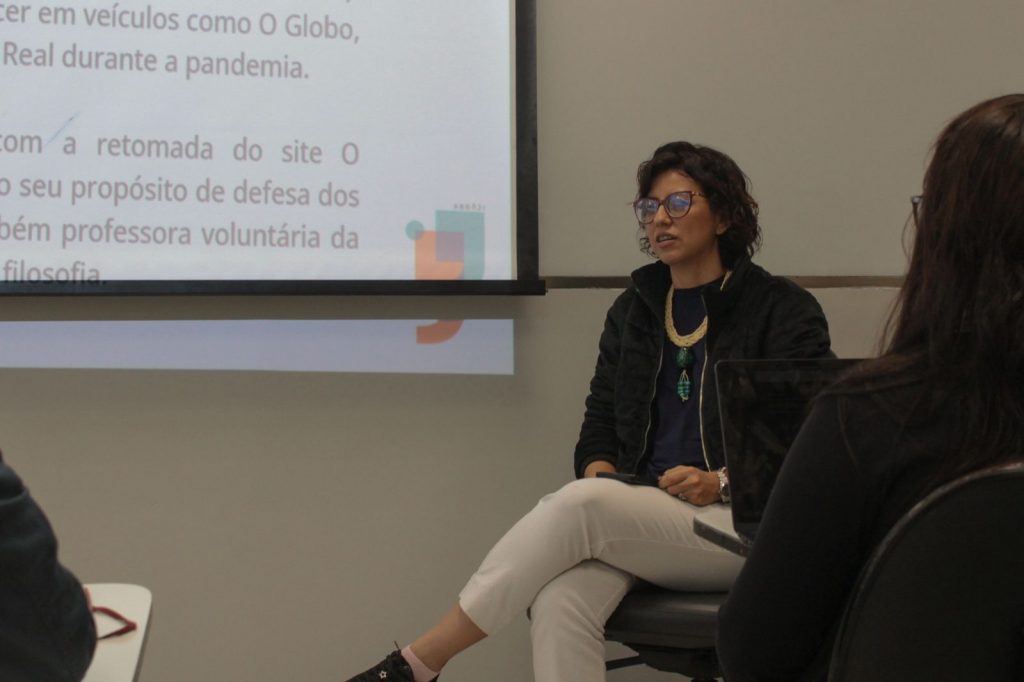CENARIUM discusses source protection in the Amazon during international journalism congress
14 de July de 2025

By Jadson Lima – From Cenarium
SÃO PAULO (SP) – “How to safely report in the Amazon: protecting journalists and sources” was the theme of CENARIUM’s first-ever participation in the 20th International Congress of Investigative Journalism, promoted by the Brazilian Association of Investigative Journalism (Abraji). The event runs from Thursday, July 10, to Sunday, July 13, at the Álvaro Alvim campus of the School of Higher Education in Advertising and Marketing (ESPM), in São Paulo. The news network is based in Manaus (AM) and has journalists stationed in major cities throughout the Brazilian Amazon.
CENARIUM founder, journalist, and master in Society and Culture in the Amazon from the Federal University of Amazonas (Ufam), Paula Litaiff, was one of the speakers opening the first day of the congress’s discussions, which includes professionals from Brazil and abroad. The panel, focused on Amazon coverage, also featured journalist Steffanie Schmidt from the news site O Varadouro. The discussion was moderated by journalist Daniel Camargos, special reporter at Repórter Brasil and columnist at Carta Capital.

During the event, Paula Litaiff pointed out that the challenges of reporting in the Amazon have become even more complex due to the sharp rise in violence against activists and professionals working in the region. She highlighted the safety protocols adopted by CENARIUM. She also emphasized issues like poor internet coverage in the region and the failure of state security to protect citizens living in conflict zones.
“The first protocol created by CENARIUM is to avoid enclosed and isolated spaces with individuals who have previously been the subject of investigative reporting by journalists in the network. This came after a personal experience I had, when I was assaulted along with another colleague during the coverage of a politician who had been under investigation in 2009. Over time, these measures were refined to ensure that reporters could work safely, while upholding the constitutional right of every citizen to access information,” said Litaiff.
According to her, journalists investigating organized crime in the Amazon must also assess the relationship between the local population and the authorities in power in the region. As part of her examples on safety, the CENARIUM founder showcased reports from conflict zones, including “Vale do Madeira: River of Death”, which covered the Abacaxis River massacre in Amazonas, and “The gas that suffocates in the Amazon”, which revealed how the company Eneva S.A. violated international protocols—according to Indigenous leaders and the Federal Prosecutor’s Office (MPF)—to explore gas in the Silves (AM) region.

“One of the most important protocols is deciding who will be part of the reporting team going into the field. Today, as a manager, I believe our media outlet cannot send someone who has just started their journalism career into a conflict zone. We may evaluate doing so as part of a learning experience, but that person must be accompanied by a reporter and a photojournalist with at least ten or twenty years of experience in the field. For the areas mentioned, in addition to media professionals, we also hired a private security guard to ensure their safety,” she explained.
Journalist Steffanie Schmidt, who works at O Varadouro, also spoke on how to protect professionals covering the Brazilian Amazon. According to her, recent years have seen a shift in the dynamics of violence against journalists investigating groups involved in illegal activities in these territories. She attributed this to developments during the administration of former president Jair Bolsonaro (2019–2022), a politician known for his hostility toward the press.

“We’ve seen a shift in the dynamics of violence within the territories, mainly driven by the actions of the Bolsonaro government. That makes security protocols even more crucial, as well as collaboration among journalists to exchange experiences. There’s no ready-made formula, but we need to take basic steps to ensure the safety of both the journalist and the source. That’s why we need responsible journalism that doesn’t ignore these realities,” she said.
Indigenous leadership reinforces journalism’s role
The panel that included CENARIUM‘s founder also welcomed a notable figure in the audience: Beto Marubo, an Indigenous leader from Vale do Javari (AM). During the discussion, he reaffirmed the importance of valuing local journalism in covering various aspects of life in the Amazon. According to Marubo, journalists based in the region are more familiar with the local context, which ensures greater accuracy in reporting.
Referring to the Bruno and Dom case, the Indigenous leader pointed out that the tragedy only gained the attention it deserved because of journalism.
“Value local communicators. That’s essential because they’re the ones who know the dynamics on the ground. At that time, referring to the case of Bruno and Dom, the only way we could mobilize authorities was through journalism. We activated the communication network and soon journalists like Sônia Bridi and Paula Litaiff joined in. Within a week, reporters from around the world had arrived in Atalaia do Norte (AM), which created a shift. Initially, authorities—namely President Jair Bolsonaro (PL)—claimed that Bruno and Dom were just a couple of irresponsible people. But when international pressure mounted, especially in New York, their stance started to change. That was thanks to journalism,” he stated.
Photojournalism in the Amazon
CENARIUM also took part in another panel focused on “Covering the climate crisis through photojournalism and audiovisual media.” The session was moderated by photojournalist Ricardo Oliveira and featured Michael Kodas, senior editor at Inside Climate News and advisor to the Society of Environmental Journalists; Uruguayan documentary photographer and filmmaker Mariana Greif; and filmmaker Takumã Kuikuro.

Oliveira described the event as dynamic and educational, offering participants a variety of techniques for capturing the reality of a region currently experiencing unprecedented impacts from climate change.
“The first round of discussions was very productive and educational because we had professionals who are well-versed in environmental issues. All three presented successful case studies, and the debate unfolded in a way that allowed the audience to understand all the nuances of what it means to report during a critical time in human history,” he said.

